|
Qingtiangang in Yangmingshan National Park is a large grassland that lies on top of an old lava terrace. It is famous for the water buffalo that congregate here to graze and is one of the most popular areas in the park. Besides enjoying views of wild water buffalo, there are also many hiking trails and historic trails nearby. Overall it is a family-friendly destination and one of the most popular attractions in Taipei City.
Background: Qingtiangang, literally meaning "Hill Holding up Heaven" gets its name from the KMT Qingtian garrison that once guarded the hills and grasslands here. Officially it lies in Shilin District of Taipei, but parts of the grassland also lie in Jinshan District of New Taipei. The grassland lies 770 meters above sea level. The area known as Yangmingshan now was formed by volcanoes about 700,000 years ago, forming many mountains about 1000 meters or less in northwestern Taiwan. The park still features active volcanoes, vents, and hot springs. The original name of the area was Caoshan (grass mountain 草山). During the Qing Dynasty, the area was used to harvest sulfur, and many of the hills were burned to help catch sulfur thieves, Qingtiangang likely being one of these areas. Sulfur mining at Dayoukeng Crater in Yangmingshan National Park started in the Qing Dynasty by a British mining company who first obtained the rights to mine here in 1897. Currently you can find lots of old mining equipment that were abandoned here. The Yulu Old Trail was built near Dayoukeng to transport mining materials, and extended over to Qingtiangang. Mining sulfur ended with the formation of Yangmingshan National Park. In 1927 during the Japanese era, Yangmingshan was made as the first national park in Taiwan, then known as Datunshan National Park Association. The area around Qingtiangang to Lengshuikeng was made into a ranch for water buffalo, and grass from Japan was planted here for them to graze. In 1950 after the ROC took Taiwan, Chiang Kai-shek renamed the park after the philosopher Wang Yangming, and called the area Yangmingshan. The KMT kept the ranch at Qingtiangang and continued to maintain it. They also built bunkers here and kept a garrison of troops. In 1985, after resolving many land disputes, Yangmingshan National Park was officially designated as a national park in the ROC era. In2018, a mother died after being pushed over by a water buffalo at Qingtiangang. In 2020, the family was awarded NT$3.96 million from the park and wooden fences were built around the grasslands shortly after. The water buffalo at Qingtiangang are actually closely watched and cared for. Although they roam free around Yangmingshan, they are watched over by the Agricultural Associations of Jinshan, Shilin, Yangmingshan, and Beitou, and well as the national park management. In the winter of 2020 which was unusually wet, tens of cows began to die of malnutrition, therefore the park took steps to supplement the diet of the remaining cattle. Many cows were brought to lower eve lavations for rehabilitation before being released back to Yangmingshan. Due to its easy accessibility and nearby attractions such as Lengshuikeng and Qixingshan, it is a popular stop in Yangmingshan and has a parking lots and a visitor's center. In addition, it is one of the most popular tourist destinations in Taipei City. Hours: The visitor's center is open from 9 AM to 4:30 PM. Price: Free (car parking 30-50 NT, scooter parking 20 NT) You can book tours to Yangmingshan on TripAdvisor here, Klook here, or KKday here or here. Tours: You can check out tours to Yangmingshan such as a One-day Yangmingshan NP Beitou Hot Spring Park and Tamsui Tour Package, Beitou and Yangmingshan Day Tour from Taipei, One Day Hike around Yangmingshan, or Private Yangmingshan Volcano Tour and more on TripAdvisor here, Klook here, or KKday here. Hotels in Taipei: High end: We have stayed at and recommend the Yuanshan Grand Hotel, once the tallest building in Taiwan and still the most grand (book on Booking.com here, Tripadvisor here, or Agoda here). We also recommend Fullon Hotel which has locations in Tamsui and Fulong near the beach (book on Booking.com here, Tripadvisor here, Agoda here, or Hotels.com here). Budget Hotels: We have stayed at and also recommend Fu Chang Hotel in Ximending, which is within walking distance of Ximending shopping district (book on Booking.com here, Tripadvisor here, or Agoda here). We have also stayed at and recommend Hai Xia Your Home which is right in front of Fulong Beach (book on Booking.com here, Tripadvisor here, Agoda here, or Hotels.com here). Looking for a hotel? We recommend booking through Booking.com here, which provides the best quality selection of accommodation in Taiwan. Find out where to stay in our Taiwan hotels guide or search for the best hotel deals in Taiwan here. How to get there: By Car/Scooter: From Taipei, take provincial highway 2A north to the Zhuzihu Lookout. Keep right until you reach the turnoff the the Qingtiangang parking lot. Car parking is limited on weekends and the number of cars allowed up the mountain is also limited. There is also paid scooter parking. On weekends this place can be the most popular place in the park, and cars can be backed up for up to an hour or more, so consider taking a scooter or bus. Looking for scooter rental in Taipei? Check out Qeeq here, Klook here, or KKday here to search for options. You can also check out our scooter rental guide here. If you are looking for car rentals, you can also search Qeeq here, Klook here, or KKday here. You can also check out our car rental guide here. By Bus: From Beitou MRT Station, Take Little Bus 9 (小9) to Qingtiangang Station (擎天崗). You can book tickets to travel to Taipei via inter-city bus on Klook here. By Bicycle: Cycling is the best way to enjoy Taiwan's landscapes if you have the time and energy. Looking for bicycle rentals in Taiwan? You can use Taiwan's many Youbike sharing stations, or search for rentals on KKday here, and search for tours on Klook here. You can also check out our Taiwan cycling guide here. ​You can also book a Sunset Riverside Bike Ride and Historical Tour, 4 Hour Cycling in Taipei, Ultimate 8-Hour Cycling City Tour, or Taipei City Bike Tour with Night Market Experience on TripAdvisor here. Map: Please see below:
0 Comments
Toucheng Township in Yilan is known for its amazing beaches, but there is much more to do here, such as visit Lanyang Museum, visit Turtle Island, enjoy seafood, traditional fishing harbors, recreational farms, hiking, cycling, surfing lessons, and much more. Here is a short guide to Toucheng, to let you know the variety of activities that you can enjoy here.
Background: Before Chinese settlers came, the area around Toucheng was inhabited by the Ketagalan Aboriginal tribe, whose language is now extinct. The name Toucheng literally means "first town" in Chinese, because it was the first settlement in Yilan, settled in the late 1700s. With the nearby Wushih and Touwei Harbors around the same time, it became the economic focal point of Yilan. However in the late 1800s and early 1900s Wushih Harbor and Touwei Harbor silted in, reducing their function. With the advent of the Japanese built Yilan railway line in the mid-1900's, as well as constant floods and continually silting of the harbors, Toucheng quickly lost its importance economically and fell into decay. After residents of Turtle Island were relocated to Daxi in Toucheng, Daxi Harbor was expanded and has become one of the largest fishing harbors in the area. Due to its close proximity to Taipei, Toucheng has become a major tourist area and may be the most popular surfing location in Taiwan. Tours and Activities: You can purchase tours and tickets for many activities in Yilan such as Su'ao Crayon Castle, Taipingshan, Turtle Island, Lanyang Museum, Toucheng Leisure Farm, Zhang Mei Ama Capybura Farm, Bambi Land, Yinong Ranch, National Center for Traditional Arts, Taxi Museum, Glamping, Camping, ATV / 4-wheeling experience, SUP / paddle boarding, Ximeng Forest Theater, Surfing, Kayaking, Horse Riding, River Tracing, River Rafting, River Tubing, Pack Rafting, Water Biking, Snorkeling, Canoeing, Shrimping and many others through Klook here or KKday here. Accommodation: Looking for a hotel? We recommend booking through Agoda here, which provides the best quality selection of accommodation on the islands. We have stayed at and recommend Ying Shih Guest House, a resort in Datong Township near Taipingshan and Fan Fan Hot Spring (you can book on Agoda here or Booking.com here), and Jiaosi Hotspring Hotel, a hotel with hot springs in each room (you can book on Agoda here, Booking.com here, Hotels.com here, Expedia here, or Trip.com here). We have also stayed at Toucheng Leisure Farm, a recreational farm and experience center in Toucheng (you can book on Agoda here, Booking.com here, Hotels.com here, Expedia here, on Klook here, or on Trip.com here). You can also book Wifi and SIM cards for Taiwan on Gigago here. Need travel insurance? Compare prices on Insubuy here. Just to let you know, if you book using the links above, we get some commission at no cost to you, and you can help support our blog. You can click here to receive $5 USD on your first Klook purchase. How to get there: By TRA: Take the TRA to any of the stations in Toucheng. You can book tickets to travel to Yilan via inter-city bus on Klook here. You can book tickets to Yialn via high speed rail (HSR) on Klook here or KKDay here. Book tickets via the normal train (TRA) on Klook here. Bicycle rental: Cycling is the best way to enjoy Taiwan's landscapes if you have the time and energy. Looking for bicycle rentals in Taiwan? You can search on KKday here and search for tours on Klook here. You can also check out our Taiwan cycling guide here. By Car: From Taipei, take National Freeway 5 to Toucheng. Be careful to note that on Sundays there are highway controls for cars travelling from Yilan to Taipei from 3 PM to 8 PM, so avoid travelling back to Taipei at that time to beat the traffic. Looking for scooter rental in Yilan? You can search Klook here or KKday here to look for options. You can also check out our scooter rental guide here. If you are looking for car rentals in Yilan, you can also search Klook here or KKDay here. You can also check out our car rental guide here. Map: See below for a map of places that are covered in this blog:
Nantou lies at the heart of Taiwan and is it's only landlocked county. It is known for its rugged natural landscapes and mountains, and includes the highest mountain in East Asia. If you come to Taiwan you should definitely pass through this place and stop by at some of the sights we will mention below.
How to get around Nantou: As always, we recommend renting a scooter as the best way to see Taiwan. However, you can also a great deal of Miaoli by taking the train to Taichung then switching to inter-city bus, or local bus. Getting around in a car is also a convenient option as there is plenty of parking pretty much everywhere in this less crowded county. Scooter Rental: Looking for scooter rental in Nantou? Search Klook here or KKday here to search for options. You can also check out our scooter rental guide here. Car Rental: If you are looking for car rentals, you can also search Qeeq here, Klook here, KKday here. You can also check out our car rental guide here. By Bus: You can book tickets to travel to Nantou via inter-city bus on Klook here. You can book tickets to Taichung via high speed rail (HSR) on Klook here or KKDay here, or book tickets via the normal train (TRA) on Klook here, then switch to a bus to Nantou. Bicycle Rental: Cycling is the best way to enjoy Taiwan's landscapes if you have the time and energy. Looking for bicycle rentals in Taiwan? You can search on KKday here and search for tours on Klook here. You can also check out our Taiwan cycling guide here. Just to let you know, if you book using the links above, we get some commission at no cost to you, and you can help support our blog. You can click here to receive $5 USD on your first Klook purchase. Tours: There are many tours and activities available in Nantou such as river Tracing, paragliding, Shanlinxi Forest Recreation Area 杉林溪, Cona's Chocolate Castle, Shuiyuan Suspension Bridge, JOJOZOO Park, and Aowanda Forest Recreation Area. You can find more tours of Nantou on Klook here or KKday here. Accommodation: We have stayed at and recommend Jenq Yang Hotspring Hotel (you can book on Agoda here, Booking.com here, Trip.com here, or Klook here), a hot spring hotel near the mystical Lushan hot spring, and Maple Leaf Holiday Villa (you can book on Agoda here, Booking.com here, Hotels.com here, Expedia.com here, Trip.com here, or Klook here), a lodge with a great view and within walking distance of Cingjing Farm. I also have stayed at and recommend Kirin Villa (you can book on Agoda here or Booking.com here), a mountain resort in Puli near Sun Moon Lake. Looking for a hotel? Find out where to stay in our Taiwan hotels guide or search for the best hotel deals in Taiwan here. We recommend booking through Agoda here, which provides the best quality selection of accommodation on the islands. You can also book Wifi and SIM cards for Taiwan on Gigago here. Map: Below is a map of these sites:
Zhuzihu is a small valley in Yangmingshan National Park (陽明山國家公園 Yángmíng shān guójiā gōngyuán, in Beitou District of Taipei City) between Qixing Mountian and Datun Mountian. The valley is especially fertile due to the rich volcanic soil and abundant rain, and the entire area is full of recreational farms which have become popular tourist destinations. You should definitely stop by on your trip to Yangmingshan.
Background: Zhuzihu valley (竹子湖 Zhúzi hú) was formed from lava that flowed out from Datunshan (大屯山 Dà tún shān) and Xiaoguanyinshan (小觀音山 Xiǎo guānyīn shān). Due to its location as a high mountain valley, it rains easily here; annual rain accumulation is about 4500 mm. Before Chinese settlers came to this valley, it was simply a road from the Taipei Basin to the coast, and a hunting ground. In the early 1600s, the first Chinese settlers came to farm here in three main family groups. In 1895, a brief skrimish was fought here between the Japanese and local settlers who did not want to be part of the Japanese empire. The Japanese built hot springs here, experimental farms, a library, and a hiking dormitory. They began planting cabbage and rice here. After the ROC took over Taiwan, cabbage growing became less important, and the farmers here began planting flowers and catering to tourism instead. Now Zhuzihu is one of the most popular spots in Taipei to see flower gardens, mainly white and purple Arum-lilys (海芋 Hǎiyù) and Hydrangea (繡球花 Xiùqiú huā) which bloom from about February to June. Hours: 8 AM to 5 PM (March 27th to June 21st, in 2025) When to go: From late February to early June, when the Arum-lilys and Hydrangea are in bloom. (竹子湖海芋季; 竹子湖繡球花季) Price: 100 NT per person (can be used to purchase drinks, food, other merchandise) You can book tours to Yangmingshan on TripAdvisor here, Klook here, or KKday here or here. Tours: You can check out tours to Yangmingshan such as a One-day Yangmingshan NP Beitou Hot Spring Park and Tamsui Tour Package, Beitou and Yangmingshan Day Tour from Taipei, One Day Hike around Yangmingshan, or Private Yangmingshan Volcano Tour and more on TripAdvisor here, Klook here, or KKday here. Hotels in Taipei: High end: We have stayed at and recommend the Yuanshan Grand Hotel, once the tallest building in Taiwan and still the most grand (book on Booking.com here or Agoda here). We also recommend Fullon Hotel which has locations in Tamsui and Fulong near the beach (book on Booking.com here or Agoda here). Budget Hotels: We have stayed at and also recommend Fu Chang Hotel in Ximending, which is within walking distance of Ximending shopping district (book on Booking.com hereor Agoda here). We have also stayed at and recommend Hai Xia Your Home which is right in front of Fulong Beach (book on Booking.com here or Agoda here). Looking for a hotel? We recommend booking through Booking.com here, which provides the best quality selection of accommodation in Taiwan. Find out where to stay in our Taiwan hotels guide or search for the best hotel deals in Taiwan here. How to get there: By Car/Scooter: From Taipei, take provincial highway 2A north to the Zhizihu Lookout. At the roundabout, stay to the left off the main highway and then keep right until you reach the valley. Car parking is limited on weekends and the number of cars allowed up the mountain is also limited. There is free scooter parking everywhere. Looking for scooter rental in Taipei? Check out Qeeq here, Klook here, or KKday here to search for options. You can also check out our scooter rental guide here. If you are looking for car rentals, you can also search Qeeq here, Klook here, or KKday here. You can also check out our car rental guide here. By Bus: From Beitou MRT Station, Take Little Bus 9 (小9) to Fengjiakou Station (風架口). You can book tickets to travel to Taipei via inter-city bus on Klook here. By Bicycle: Cycling is the best way to enjoy Taiwan's landscapes if you have the time and energy. Looking for bicycle rentals in Taiwan? You can use Taiwan's many Youbike sharing stations, or search for rentals on KKday here, and search for tours on Klook here. You can also check out our Taiwan cycling guide here. Map: Please see below:
Qingpu Cypress (Dawn Redwood) Grove in Huwei, Yunlin County is a beautiful place to enjoy fall colors. There are many places like this in rural Taiwan that have recently become hot spots for Instagrammers. Normally, Taiwanese people would have to travel overseas to see cypress trees in fall colors, but now thanks to many independent farmers in Taiwan, these cypress groves make it easier for Instagrammers to take amazing European-like photos every year from November to February.
Historical Background: Bald Cypress, Metasequoia, or "dawn redwood" trees (落羽松) originate from the southern United States but were imported to Taiwan in 1901 by the Japanese. These trees like wet and humid environments and thrive well in Taiwan. They absorb a considerable amount of carbon dioxide. However, due to the hot weather in southern Taiwan, their growth there is less than ideal, so they are mainly concentrated in the central and northern regions such as Taoyuan, Hsinchu, and Miaoli. The first real tourist Cypress Grove was the Nanxing Metasequoia Forest in Taoyuan, which actually began as a plantation established by a construction company owner. Over a decade ago, he leased land in Daxi and planted over 3,000 Cypress trees to meet the needs of his construction projects as lumber. Later, aerial photos taken by the public unexpectedly turned it into a popular tourist destination. After the success of this farm nearly 10 years ago in roughly 2014, many similar cypress farms and gardens have sprung up around Taiwan, attracting visitors. Many of these places charge an entrance fee. The Secret Garden of Qingpu is the private sanctuary of former Yunlin County Magistrate, Chang Rong-wei. It sits adjacent to the Huwei Sugar Factory, on the eastern side of the riverbank road by the Huwei Iron Bridge. Inside the garden, meticulously crafted small mounds create an undulating landscape. Nestled among these are small ponds, reflecting the majestic Cypress trees against the backdrop of the sky, evoking the serene beauty similar to the landscapes of Northern Europe. When to go: The best time to go is between November and February when the Cypress trees are in fall colors. Hours: 9:30 AM to 5 PM Closed on weekends. Price: Free Where to stay: We have stayed at and recommend Ai Ni Ya Hotel, with great quality and service right in downtown Beigang (book on Agoda here or Booking.com here). We also recommend the Grand Earl Hotel, a high class hotel in central Douliu (book on Agoda here or Booking.com here) Looking for a hotel? We recommend booking through Agoda here, which provides the best quality selection of accommodation on the islands. Find out where to stay in our Taiwan hotels guide or search for the best hotel deals in Taiwan here. Tours in Yunlin: Tours and activities in Yunlin include Janfusun Fancy World Amusement Park, Kite Surfing, Tree Climbing , Chaoyang Green Energy Farm, Sam Siu Garden, Pink Castle Park, Gukeng Green Tunnel, Caoling Highway, and more. You can find more tours of Yunlin on Klook here or KKday here. Just to let you know, if you book using the links above, we get some commission at no cost to you, and you can help support our blog. You can click here to receive $5 USD on your first Klook purchase. How to get there: By Scooter: From National Freeway 1, go west on Highway until you reach Xiluo Town. The Academy is on the south side of town along Highway 154 and is hard to miss. There is free parking on the side of the road. Looking for scooter rental in Yunlin? Check out Klook here or KKday here to search for options. You can also check out our scooter rental guide here. By Car: From National Freeway 1, get off at the Xiluo Exit and keep going until you reach Xiluo Town. The Academy is on the south side of town along Highway 154 and is hard to miss. There is free parking on the side of the road. If you are looking for car rentals, you can also search Qeeq here, Klook here, or KKday here. You can also check out our car rental guide here. By Bus/Train: From Yunlin HSR Station, you can take bus 88 for about 30 minutes to Xiluo Town. The Academy is then in walking distance. You can also book tickets to travel to Yunlin via inter-city bus on Klook here. You can book tickets to Yunlin via high speed rail (HSR) on Klook here or KKDay here. Book tickets via the normal train (TRA) on Klook here. By Bicycle: Cycling is the best way to enjoy Taiwan's landscapes if you have the time and energy. Looking for bicycle rentals in Taiwan? You can search on KKday here and search for tours on Klook here. You can also check out our Taiwan cycling guide here. Map: Please see below:
Toucheng Farm is not just a farm but also a leisure area, hotel, restaurant, and activity area. Here we also fed water buffalo, learned sustainable farming, the ancient art of sweet potato baking, lime juice fermentation, and painted T-shirts. Overall it was a fun time that the whole family can enjoy.
Background: Before Chinese settlers came, the area around Toucheng was inhabited by the Ketagalan Aboriginal tribe, whose language is now extinct. The name Toucheng literally means "first town" in Chinese, because it was the first settlement in Yilan, settled in the late 1700s. With the nearby Wushih and Touwei Harbors around the same time, it became the economic focal point of Yilan. However in the late 1800s and early 1900s Wushih Harbor and Touwei Harbor silted in, reducing their function. With the advent of the Japanese built Yilan railway line in the mid-1900's, as well as constant floods and continually silting of the harbors, Toucheng quickly lost its importance economically and fell into decay. After residents of Turtle Island were relocated to Daxi in Toucheng, Daxi Harbor was expanded and has become one of the largest fishing harbors in the area. Due to its close proximity to Taipei, Toucheng has become a major tourist area and may be the most popular surfing location in Taiwan. Website: https://www.tcfarm.com.tw/en/ Facebook: https://www.facebook.com/tcfarmeng/ Twitter: https://twitter.com/toucheng_farm Tours and Activities: You can book tickets to Toucheng Leisure Farm on Klook here or on KKday here. You can also book a room there on Klook here, Agoda here, Booking.com here, Hotels.com here, Expedia here, or Trip.com here. Accommodation: We have stayed at and recommend Toucheng Leisure Farm. You can also book a room there on Klook here, Agoda here, Booking.com here, Hotels.com here, Expedia here, or Trip.com here. Looking for a hotel? We recommend booking through Agoda here, which provides the best quality selection of accommodation in Taiwan. Find out where to stay in our Taiwan hotels guide or search for the best hotel deals in Taiwan here. How to get there: By TRA: Take the TRA to any of the stations in Toucheng. You can book tickets to travel to Yilan via inter-city bus on Klook here. You can book tickets to Yialn via high speed rail (HSR) on Klook here or KKDay here. Book tickets via the normal train (TRA) on Klook here. Bicycle rental: Cycling is the best way to enjoy Taiwan's landscapes if you have the time and energy. Looking for bicycle rentals in Taiwan? You can search on KKday here and search for tours on Klook here. You can also check out our Taiwan cycling guide here. By Car: From Taipei, take National Freeway 5 to Toucheng. Be careful to note that on Sundays there are highway controls for cars travelling from Yilan to Taipei from 3 PM to 8 PM, so avoid travelling back to Taipei at that time to beat the traffic. Looking for scooter rental in Yilan? You can search Klook here or KKday here to look for options. You can also check out our scooter rental guide here. If you are looking for car rentals in Yilan, you can also search Klook here or KKDay here. You can also check out our car rental guide here. Map: Please see below:
Shuiniukeng (aka Linkou Grand Canyon or Water Buffalo Valley) is one of the few off-roading areas around Taipei. If you have a 4x4, truck, or dirt bike, this could be a fun place to test out your off-road vehicle. Also, you can sometimes spot cows grazing here.
Background: Shuiniukeng is so named because sometimes cows are left here to pasture. Originally the area was a hillside, pushed out of the ocean over thousands of years. Later, illegal gravel companies came here to harvest gravel, creating a giant hole in the hillside, making the current landscape we see today. Later the area became popular with instagrammers and off-road enthusiasts, and cows still come to graze here occasionally. Price: Free Hours: 24/7 Activities: You can book an off-road ATV experience in Linkou on Klook here. Hotels on Taiwan's Northern Coast: We recommend Fullon Hotel which has locations in Tamsui and Fulong near the beach (book on Booking.com here, Tripadvisor here, Agoda here, or Hotels.com here). We have also stayed at and recommend Hai Xia Your Home which is right in front of Fulong Beach (book on Booking.com here, Tripadvisor here, Agoda here, or Hotels.com here). Looking for a hotel? We recommend booking through Booking.com here, which provides the best quality selection of accommodation in Taiwan. Find out where to stay in our Taiwan hotels guide or search for the best hotel deals in Taiwan here. How to get there: By Car: By car, you must come northbound on expressway 61 and turn right on the small road that leads to the area from the south. To get back, you have to pass under the highway and then turn south on expressway 61. By public transport: There is no way to get there by public transport except by walking from Linkou. Map: Please see below:
Gold Mountain Ranch and Resort (aka Jinshan Yijing in Chinese, or simply "Horse Camp") is a campground and horse ranch in Jinshan District of New Taipei. A stay here includes activities such as horseback riding, four-wheeling, archery and bb-gun practice, and also a filling BBQ dinner and western style breakfast. Staying here makes you feel like you are in the rural American West, which is a unique experience in Taiwan. With a shortage of ranches and horse riding opportunities in Taiwan, Gold Mountain is a special place that you should not miss on your trip along Taiwan's northern coast.
Background: From my conversation with the Laoban (Boss), Mr. Z, as well as info from their website, Mr. Z. started this ranch about three years ago as a pet project, due to his love of horses. Before that he was in the restaurant business. He said that he searched the entire island for a suitable place for a Horse Ranch, which was his dream, and happened to find this spot of land where the ranch currently operates. When he started the ranch, he would still drive back to Zhonghe every night to take care of his ailing cat. Now he spends all his time taking care of the horses, even sleeping next to them at night in case something goes wrong. Now him and four other employees help to run the campground and ranch. Currently the ranch has 6 horses, about five ATVs, and can accommodate 60 people. Soon they plan to open a restaurant and bar on the property, as well as a wilderness survival training camp. Hours: Check in: 1 PM Check out: 11 AM Price: 1600 NT - 2750 NT per night per person Additional horse rides charged per hour/lesson. You can book a night at Gold Mountain Ranch on Klook here. Website: https://goldmrnr.com/ Facebook Page: https://www.facebook.com/goldmrandr/ (like and share button below)
How to get there:
By Car/Scooter: From Taipei, take National highway 3 north to Wanli, then take provincial highway 2 along the northern coast until you reach Jinshan. Then take provincial highway 2A east to county highway 25, and turn right at Sanhe elementary school. Turn left when you see the sign for "金山驛境." The ranch is at the end of the road. It takes about 50 minutes from Taipei by car. If you are looking for car rentals, you can also search Qeeq here, Klook here, or KKday here. You can also check out our car rental guide here. Looking for scooter rental in northern Taiwan? You can search on Klook here or KKday here to search for options. You can also check out our scooter rental guide here. By Bicycle: Cycling is the best way to enjoy Taiwan's landscapes if you have the time and energy. Looking for bicycle rentals in Taiwan? You can use Taiwan's many Youbike sharing stations, or search for rentals on KKday here, and search for tours on Klook here. You can also check out our Taiwan cycling guide here. You can also book a cycling tour on TripAdvisor here. For more information, check out our Taiwan transportation guide here. By Bus/taxi: There are buses that leave from Taipei City Hall station to Jinshan hourly. The ride takes about an hour. From central Jinshan you can take a taxi (about 200 NT) to the ranch. You can purchase a discount easy card to use on the MRT and buses from Klook here or KKday here. You can also book an MRT travel pass on Klook here. Map: Please see below:
Flying Cow Ranch is a recreational farm in Miaoli County that is open for tourists. Activities there include cow milking, pony rides, as well as feeding ducks, goats, and rabbits, making a trip to this farm fun for the whole family.
Background: Flying Cow Ranch was originally created in 1975 by the government, using students that were sent to America to learn the art of raising dairy cows. After they graduated from schools in the US, the government set aside land in Miaoli for a dairy farming model in Taiwan, known as the "Central Taiwan Youth Dairy Farm" (中部青年酪農村). In 1985, it was converted into a recreational farm, and in 1995 it was opened to the public. Hours: 7 AM to 10 PM every day Price: 220 NT per person (including a free dairy product) 50 NT per car You can book tickets to Flying Cow Ranch for a discount on KKday here or on Klook here. Accommodation: Flying Cow Ranch: 3000-5000 NT per night (1000+ NT per campsite), you can book a room on Agoda here, Booking.com here, or Trip.com here. In Miaoli we have also stayed at and recommend Beautiful Landscape Resort, a fish farm and resort near Nanzhuang Old Street (you can book on Agoda here, Booking.com here, Hotels.com here, or Expedia here), and Yuan Motel, a high class car motel which includes a great breakfast buffet (you can book on Agoda here, Booking.com here, Hotels.com here, or Expedia here). Looking for a hotel? Find out where to stay in our Taiwan hotels guide or search for the best hotel deals in Taiwan here. You can also book Wifi and SIM cards for Taiwan on Gigago here. Need travel insurance? Compare prices on Insubuy here. Website: https://www.flyingcow.com.tw/en/ How to get there: By Car/Scooter: From Taipei, take National Freeway 3 to Miaoli and get off at the Tongxiao exit. Then take county road 121 east until you see the signs for Flying Cow Ranch, the Ranch is up the mountain about 2 KM. Car parking is 50 NT, scooter parking is free. If you are looking for car rentals, you can also search Qeeq here, Klook here, or KKday here. You can also check out our car rental guide here. Looking for scooter rental in Miaoli? Check out Klook here or KKday here to search for options. You can also check out our scooter rental guide here. You can also check out our car rental guide here. By Bus: Take Miaoli Motor Transport bus 5820 from Tongxiao Station two and a half hours(!) to Qixia Bus Station. From there it is a 2 KM walk uphill to the farm! You can book tickets to travel to Miaoli via inter-city bus on Klook here. By TRA: You can take the HSR or TRA train to Tongxiao Station, then take the bus or a taxi (300 NT) to the farm. Book tickets via the normal train (TRA) on Klook here. By HSR: You can take the HSR to Miaoli Station, then switch to TRA, or take a taxi directly from the station (about 400 NT). You can book tickets to Miaoli via high speed rail (HSR) on Klook here or KKDay here. By Bicycle: Cycling is the best way to enjoy Taiwan's landscapes if you have the time and energy. Looking for bicycle rentals in Taiwan? You can search on KKday here and search for tours on Klook here. You can also check out our Taiwan cycling guide here. Map: Please see below:
Qingjing Farm (aka Cingjing Farm) is a high mountain farm in Renai Township of Nantou County. It features beautful mountain scenery, sheep petting zoo, animal shows, horse riding, and horesmanship shows.
Historical Background: During Japanese rule, the area around Qingjing farm was originally pasture for the cattle of the Seediq aboriginal tribe. This is the same tribe that caused the Mushe Incident, the biggest rebellion against the Japanese during that era involving mass killings of Japanese and even more Aboriginals in return. If you don't know what I'm taking about, you should watch the film Warriors of the Rainow: Seediq Bale. The Mushe incident memorial can be found a littler further down the road in Wushe as the Mona Rudo Resistance Monument. Later in 1959 the ROC government made the area a relocation area for a few military families to plant tropical fruits. In 1967 Chiang Chin-kuo (Chiang Kai-shek's son) visited the area and remarked: 「清新空氣任君取,境地優雅是仙居」meaning "There is fresh air for one to breathe, and the area is elegant like the dwelling place of a fairy." From then on the farm changed it's name from Rongmin Farm (榮民農場meaning honorary citizens' farm) to Qingjing Farm, meaning "Fresh Landscape." By 1985 the farms around Qingjing all were making losses. But then the first hotel was built in the area, the income of which was greater than that of the farm itself. From then on the tourist sector of Qingjing farm began. Nowadays the farm is purely a tourist attraction, and many hotels and hostels have been built in the area. Price: Full adult ticket: 200 NT on holidays, otherwise 160 NT Student ticket: 130 NT Elderly/disabled/children 6-12: 80 NT Groups over 30 people: 120 NT Hours: 8 AM - 5 PM every day! Tours: You can take a day tour from Taichung via Klook which will cover both travel and entrance ticket to Qingjing Farm here. You can book a discount ticket for the skywalk and Swiss garden on Klook here. You can find more tours of Nantou on Klook here or KKday here. Accommodation: We have stayed at and recommend Maple Leaf Holiday Villa (you can book on Agoda here, Booking.com here, Hotels.com here, Expedia.com here, Trip.com here, or Klook here), a lodge with a great view and within walking distance of Cingjing Farm. Looking for a hotel? Find out where to stay in our Taiwan hotels guide or search for the best hotel deals in Taiwan here. We recommend booking through Agoda here, which provides the best quality selection of accommodation on the islands. You can also book Wifi and SIM cards for Taiwan on Gigago here. How to get there: By Bus: From Taichung, take the Kbus, Nantou Bus, or Quanhang bus to the Puli bus station. You can also take Kbus from Taipei Main station straight to the Puli bus station. From there, you can buy entrance tickets to Qingjing and round trip bus tickets all in one via Nantou bus. The bus will leave and come back to Puli Station. Be sure to take the bus all the way to the Qingjing entrance. You can book tickets to travel to Nantou via inter-city bus on Klook here. You can book tickets to Taichung via high speed rail (HSR) on Klook here or KKDay here, or book tickets via the normal train (TRA) on Klook here, then switch to a bus to Nantou. By Car/Scooter: Take national Highway 6 to Puli and then continue onto provincial highway 14 all the way to Qingjing farm. There are private parking lots above the entrance for about 200 NT a day, and there are usually extra spots even on a busy day. Looking for scooter rental in Nantou? Search Klook here or KKday here to search for options. You can also check out our scooter rental guide here. If you are looking for car rentals, you can also search Qeeq here, Klook here, KKday here. You can also check out our car rental guide here. Bicycle Rental: Cycling is the best way to enjoy Taiwan's landscapes if you have the time and energy. Looking for bicycle rentals in Taiwan? You can search on KKday here and search for tours on Klook here. You can also check out our Taiwan cycling guide here. Just to let you know, if you book using the links above, we get some commission at no cost to you, and you can help support our blog. You can click here to receive $5 USD on your first Klook purchase. Map: Please refer to the map below:
Jingyuan (aka Jing-Yuan Leisure Farm or Air Coffee) is a unique Taiwanese style holiday destination. It claims to have the only open air restaurant in Taiwan that literally borders an airstrip, so you can sip coffee and watch large commercial airplanes take off and land right next to you. Also there is a zoo with hippos, lions, llamas, and other animals. In addition there is a large playground, mini train, campground, and multiple restaurants on the grounds.
Background: Jingyuan originally opened about 20 years ago as a coffee shop next to Kaohsiung International Airport in Xiaogang. Later, more attractions were added to the grounds such as a child's playground, petting zoo, campground, and additional restaurants. It is not usually a stop for travelers to the airport; it sits on the opposite side of the airstrip from the airport terminal. It is more of a destination for local Taiwanese people. On weekends the place is usually packed with people, mostly families with small children. Hours: 9:30 AM to 11:00 PM Price: 250 NT per adult 150 NT per child Accommodation We have stayed at and recommend Chao She Hotel (you can book on Agoda here, Booking.com here, Hotels.com here, or Expedia here) IHI Sanduo Travel Hotel (you can book on Agoda here, Booking.com here, Hotels.com here, or Expedia here), and Mingli Hotel (you can book on Agoda here, Klook here, or Hotels.com here) which are three inexpensive and high quality choices in downtown Kaohsiung. I also have stayed at and recommend Kaohsiung Meinong Rabbit Paul Homestay B&B (you can book on Agoda here, Booking.com here, or Trip.com here), a quiet B&B in rural Meinong, and Chengching Lakeside Resort (you can book on Agoda here, Booking.com or Trip.com here)and the Grand Hotel Kaohsiung (you can book on Agoda here, Booking.com here, Hotels.com here, or Expedia here) which both offer breakfast buffet and free entrance into Chenqing Lake Park. I have also stayed at the 85 sky tower which offers great views of the city; you can search for rooms in the 85 sky tower on Agoda here, Booking.com here, Hotels.com here, Expedia here, or Trip.com here). Find out more about where to stay in our Taiwan hotels guide or search for the best hotel deals in Taiwan here. We recommend booking through Agoda here, which provides the best quality selection of accommodation on the islands. You can also book Wifi and SIM cards for Taiwan on Gigago here. Need travel insurance? Compare prices on Insubuy here. Tours: You can find more tours and activities in Kaohsiung such as Pier 2, Meinong Hakka Museum, Hamasen Railway Museum, Suzuka Circuit Park, i-Ride Kaohsiung Visual 5D Flying Theater, National Science and Technology Museum , Senya Village Restaruant, Austin Land, Ski School Indoor Ski Slope, and many more on Klook here or KKday here. Just to let you know, if you book using the links above, we get some commission at no cost to you, and you can help support our blog. You can click here to receive $5 USD on your first Klook purchase. How to get there: By car/scooter: From central Kaohsiung, take provincial highway 17 south to Caoya MRT station, then turn left on Zhongan Road. You will then need to turn right onto Mingsheng Road Alley 120, and keep going until you reach the parking lot. Looking for scooter rental in Kaohsiung? You can check out Klook here or KKday here to search for options. You can check also out our scooter rental guide here. If you are looking for car rentals, you can search Qeeq here, KKday here, or Klook here. You can also check out our car rental guide here. By MRT/bus: Take the MRT to Caoya Station, then take bus 69A 10 minutes to Mingsheng Station. The farm is just a short 2 minute walk away. You can book tickets to travel to Kaohsiung via inter-city bus on Klook here. You can book tickets to Kaohsiung via high speed rail (HSR) on Klook here or KKDay here. Book tickets via the normal train (TRA) on Klook here. You can also book a Kaohsiung Travel pass here. Map: Please see below.
Shuiwaku is one of the most beautiful places in all of Kenting National Park. It features a large grassland that covers the southern tip of Taiwan. has great views of the shoreline on the east side of the peninsula, featuring a wind-cut sandy landscape and sea cliffs.
Background: Shuiwaku literally means "Water Frog Hole." It was first settled about 100 years ago by local residents (including both Han Chinese and those with aboriginal ancestry). They would fish for milkfish in the summer, and in the winter time when the weather was not good for fishing they planted crops here at the grasslands of Shuiwaku. One can also often see Sika deer grazing here. Kenting was first settled by Chinese during the Qing Dynasty. The word Kenting comes from two words that mean cultivate (ken3 墾) and strong man (丁 ding1). During that time, a group of strong men (or Zhuang Ding 壯丁) came from Guangdong, who were basically Chinese pioneers of the area to cultivate the land, hence the area was named Kenting for them. The area was considered to be made into a park during the Japanese occupation due to it being the only tropical location in the Japanese Empire, but was never officially created. During the Japanese Era, Nanwan was used as a whaling area and there were a few fishing villages here. Kenting National Park was established in 1984 as the first national park in Taiwan after WWII. Kenting became a major vacation spot, becoming a center for hostels and hotels for travelers. Hours: 24/7 Price: Free How to get there: By car/scooter: Take provincial highway 26 on the east side of Kenting until you come to Shuiwaku on the left side of the road. There is parking on the side of the road. Looking for scooter rental in Kenting? Click here or here to search for options. You can also check out our Taiwan scooter rental guide here. If you are looking for car rentals, you can also search here. You can also check out our car rental guide here. By bus: From Hengchun, take bus 8249 to Shuiwaku bus stop. You can book tickets to Pingtung via high speed rail (HSR) on Klook here or KKDay here, or book tickets via the normal train (TRA) on Klook here. You can book tickets to travel to Pingtung via inter-city bus on Klook here. Accommodation: I have stayed at many hostels and hotels in Kenting, and even almost bought a house here. Some places that I have stayed at and can recommend are Nanwan Kiki (book on Agoda here, Booking.com here), a B&B next to Nanwan Bay, Kenting's most popular Beach. There are also a few decent hotels near Kenting Street Night Market like Kenting Star Inn 888 (book on Agoda here, Klook here, Hotels.com here, Expedia here, or Booking.com here), or Kenting Dajianshan Hotel (book on Agoda here, Booking.com here, Hotels.com here, or Expedia here). You will notice that none of these hotels are five star resorts (I do not come to Kenting to waste my time at a resort, but you can still search Agoda, Booking.com, Hotels.com, or Expedia for those) but they are in my opinion the above have the best value for the money. Looking for a hotel? Find out where to stay in our Taiwan hotels guide or search for the best hotel deals in Taiwan here. We recommend booking through Agoda here, which provides the best quality selection of accommodation in Taiwan. You can also book Wifi and SIM cards for Taiwan on Gigago here. Need travel insurance? Compare prices on Insubuy here. Tours and Activities in Kenting: There are many activities available such as snorkeling, diving, SUPing, surfing, submarine riding, and river tracing. You can find more tours of Kenting on Klook here or KKday here. Just to let you know, if you book using the links above, we get some commission at no cost to you, and you can help support our blog. You can click here to receive $5 USD on your first Klook purchase. Map: Please see below:
A few weeks ago I was invited to a friend's farmhouse in Hsinchu. This three-sided house is nothing special; there are thousands of similar houses throughout Taiwan. However, in this blog, you can explore what life was like for most Taiwanese families in the not so distant past.
Green World is an ecological farm in Beipu Township of Hsinchu County. It features over 70 hectares of open area, petting zoos, a reptile center, butterfly area, bird park, swan lake, and features animal shows. It is the largest and most diverse tropical rainforest ecological area in Asia and is definitely worth a trip.
Background: Green World Ecological Farm was established in 2004 and covers roughly 75 hectares of land, making it the largest and most diverse tropical rainforest ecological area in Asia. Over 50 hectares of land have been left as a nature preserve. The park features six main areas: swan lake, butterfly ecological park, discovery land area, bird ecological park, water plants park, and biodiversity adventure area. The park is popular with families and children and can get pretty packed on weekends and holidays. Price: 380 NT per person You can book discounted tickets to Green World on KKday here or Klook here. Hours: 8:30 AM to 5:30 PM Website: www.green-world.com.tw/en/about.php Tours: You can find more tours and activities in Hsinchu such as You can find more tours and activities in Hsinchu such as river tracing, wild hot springs, white water kayaking, backpack rafting, Little Ding Dong Theme Park, Leofoo Village Theme Park, Window on China Theme Park, glamping, camping, stone spa, horse riding, Yukids Island, Tom and Bei Bei Parent Child Paradise, bee keeping experience, cycling, dried persimmons experience, Jump Wave Trampoline Park and more on Klook here or KKday here. Where to stay: Most of the accommodation you will find is near the city center. If you will only visit downtown, you can consider a day trip from Taipei. We have stayed at and recommend the Golden Motel a high quality motel near Green Grass Lake (you can book on Agoda here, Booking.com here, Hotels.com here, Expedia here, or Trip.com here), and CD Motel, another high quality motel in downtown Hsinchu (you can book on Agoda here, Booking.com here, or Trip.com here). Unfortunately I cannot recommend any further hotels that I have stayed at in Hsinchu because usually we stay at my wife's uncle's house. You can find out where to stay in our Taiwan hotels guide or search for the best hotel deals in Taiwan here. You can also book Wifi and SIM cards for Taiwan on Gigago here. Need travel insurance? Compare prices on Insubuy here. Just to let you know, if you book using the links above, we get some commission at no cost to you, and you can help support our blog. You can click here to receive $5 USD on your first Klook purchase. How to get there: By Car/Scooter: From Zhudong, take provincial highway three south until you reach the signs for Green World. You have to drive down a mountain road to get there. Parking is paid, even if you park on the side of the road. If you are looking for car rentals in Hsinchu, you can also search Qeeq here, Klook here, or KKDay here. You can also check out our car rental guide here. Looking for scooter rental in Hsinchu? You can search Klook here or KKday here to look for options. You can also check out our scooter rental guide here. By Bus: Take bus 5608 from Hsinchu Station to Zhudong, then switch to bus 5626A which stops at Green World. The total bus journey takes about two hours. You can book tickets to travel to Hsinchu via inter-city bus on Klook here. You can book tickets to Hsinchu via high speed rail (HSR) on Klook here or KKDay here. Book tickets via the normal train (TRA) on Klook here. By Bicycle: Cycling is the best way to enjoy Taiwan's landscapes if you have the time and energy. Looking for bicycle rentals in Taiwan? You can search on KKday here and Klook here. You can also check out our Taiwan cycling guide here. Map: Please see below:
Wuling Farm is a recreational farm in the mountains of Taichung, Taiwan. It is one of the only places that you can spot the endangered Formosan Landlocked Salmon in the wild, and includes flowers, fruit trees, tea plantations, cherry blossoms, hikes, camping, waterfalls, and wildlife to enjoy. It is a great place to experience Taiwan's high mountain ecology.
Background: Originally the Qijia Valley where Wuling Farm sits was home to seven families of the Ayatal Tribe, and aboriginal peoples lived here starting over 4,000 years ago. The aboringal people were relocated to Sqoyaw Village in the 1950s. Wuling Farm was established in 1963 as a way to provide a living for retired KMT veterans. The farm's original purpose was to plant temperate fruit trees and vegetables. Starting in 1989, the farm began tourist acticites, such as building a campground, tea houses, gardens, hotels, and a tourist service center. The farm sits at about 2000 meters above sea level (6,561 feet). Website: https://lang.wuling-farm.com.tw/lang/index.php Price: 160 NT per person to enter 50 NT for cars 10 NT for scooters Accommodation: We recommend staying overnight because you will likely have to travel a long time to get here (4 hours from Taipei), and staying overnight lets you maximize your time here. You can book online for one of the following accommodation options: Wuling National Hostel (2,000 NT - 8,000 NTD per night) Wuling Hoya Resort (6,000 - 15,000 NTD per night) Wuling Campground (1,000 - 2200 NTD per night) Hours: 24/7 When to go: A popular time to go is in March-April when there are cherry blossoms. Also, it can get very cold in the winter. How to get there: By Car/Scooter: It is actually faster to travel to Wuling Farm from Taipei instead of downtown Taichung, even though technically the farm is in Taichung City. From Yilan, take provincial highway 7 through Datong Township and up the mountain until you reach Wuling Farm. By Bus: Taiwan Tour Bus and Lion Travel have busses that leave from Taipei and arrive 4 hours later. Map: Please see below: |
Author 作家I am an American expat who has extensive experience living, working, and traveling in Taiwan. In my day, I had to learn many things about Taiwan the hard way. But I have come to learn that Taiwan is one of the best places in the world for Foreigners to live. This blog does not represent the opinions of every foreigner in Taiwan. I am just trying to help others learn more about this beautiful country. Categories
|


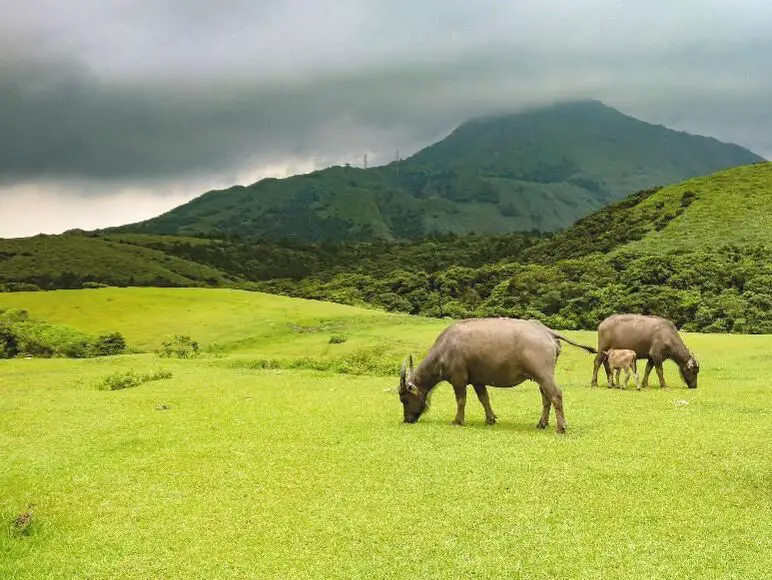
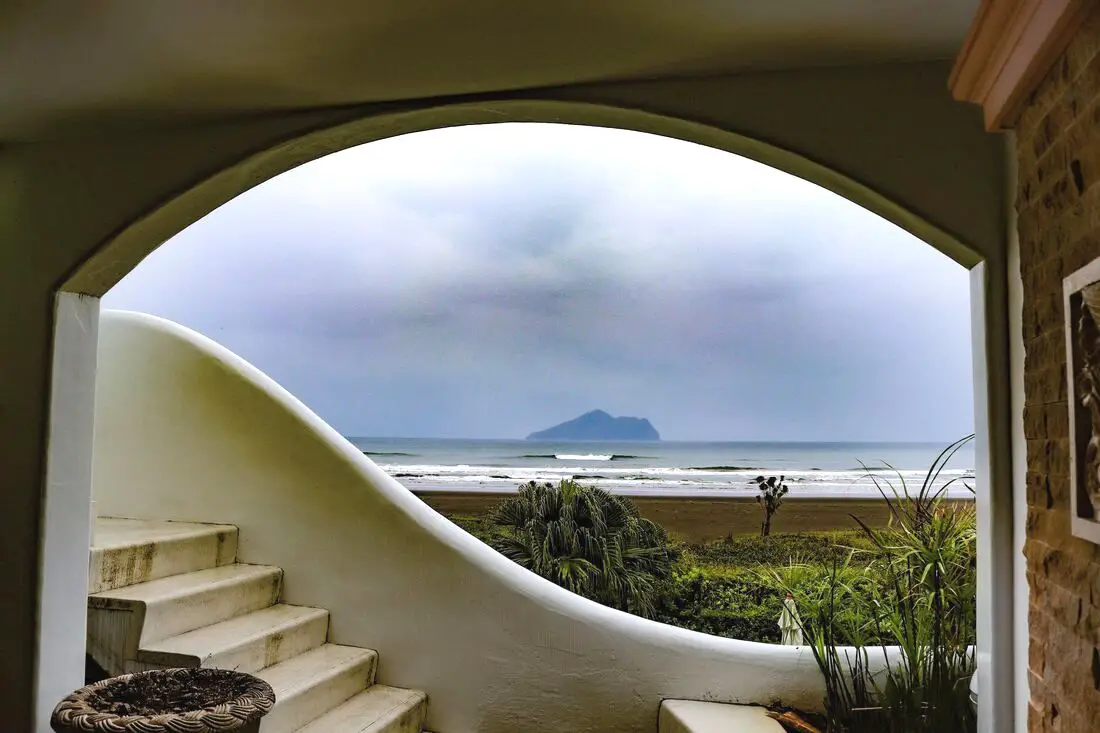

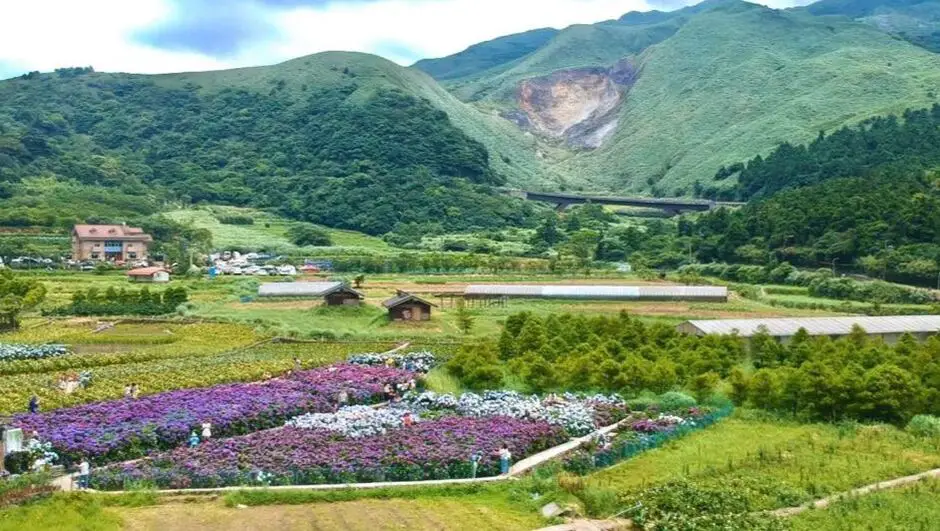

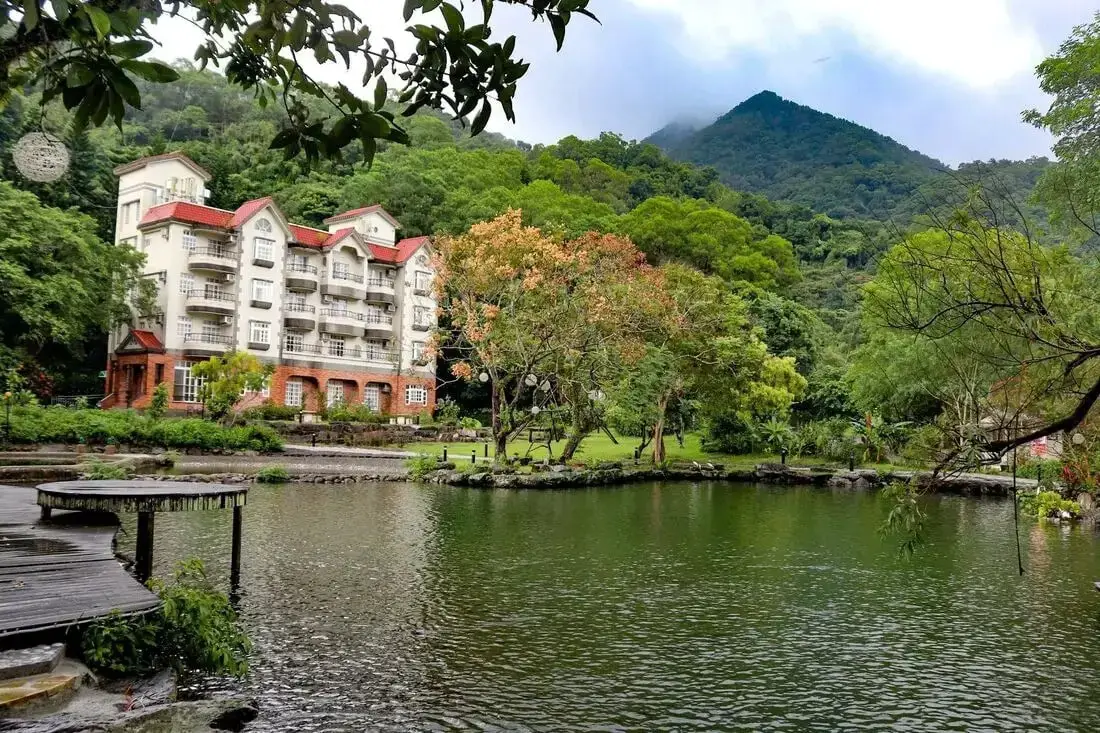
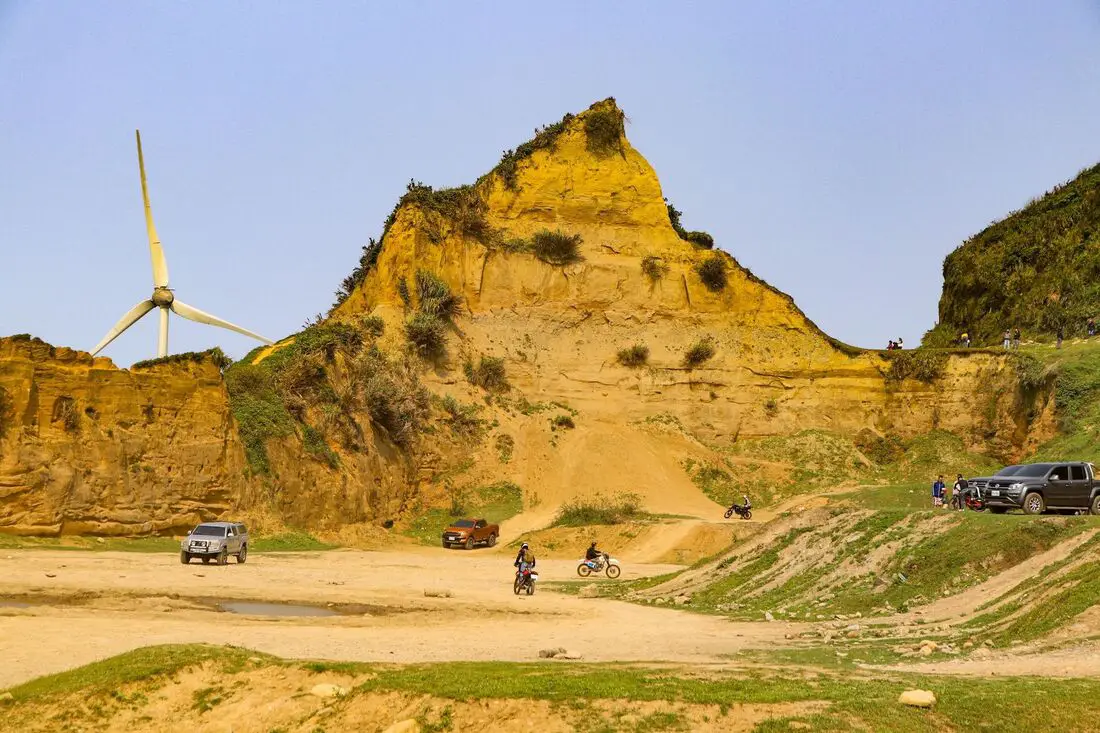
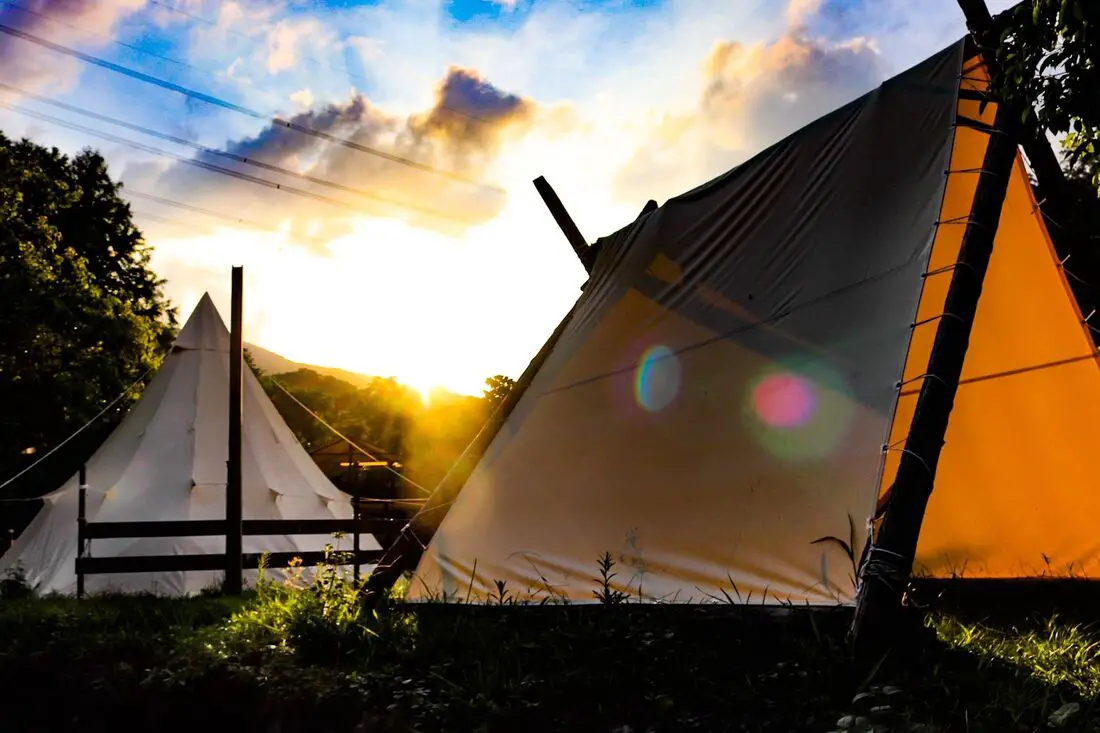
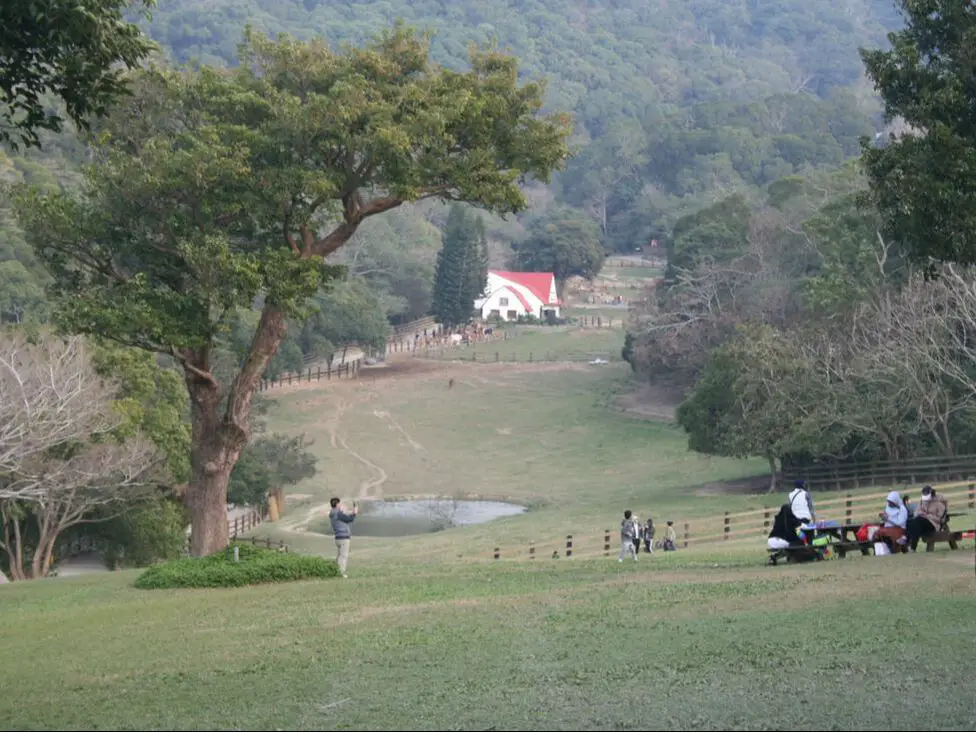
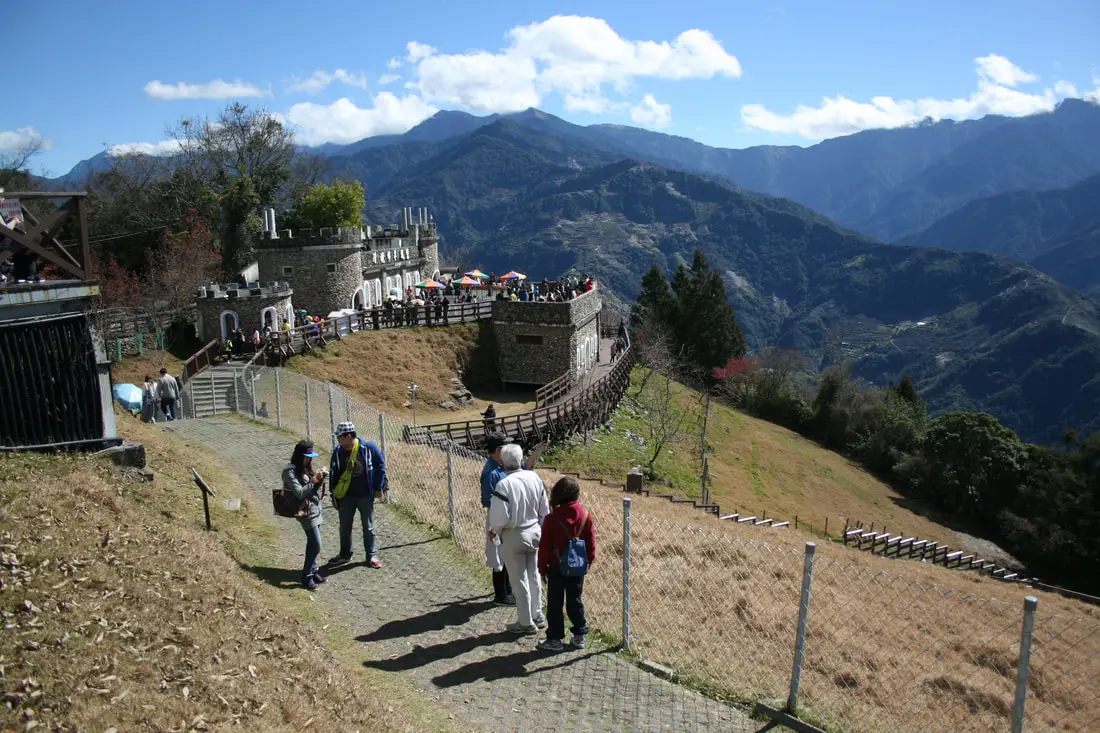
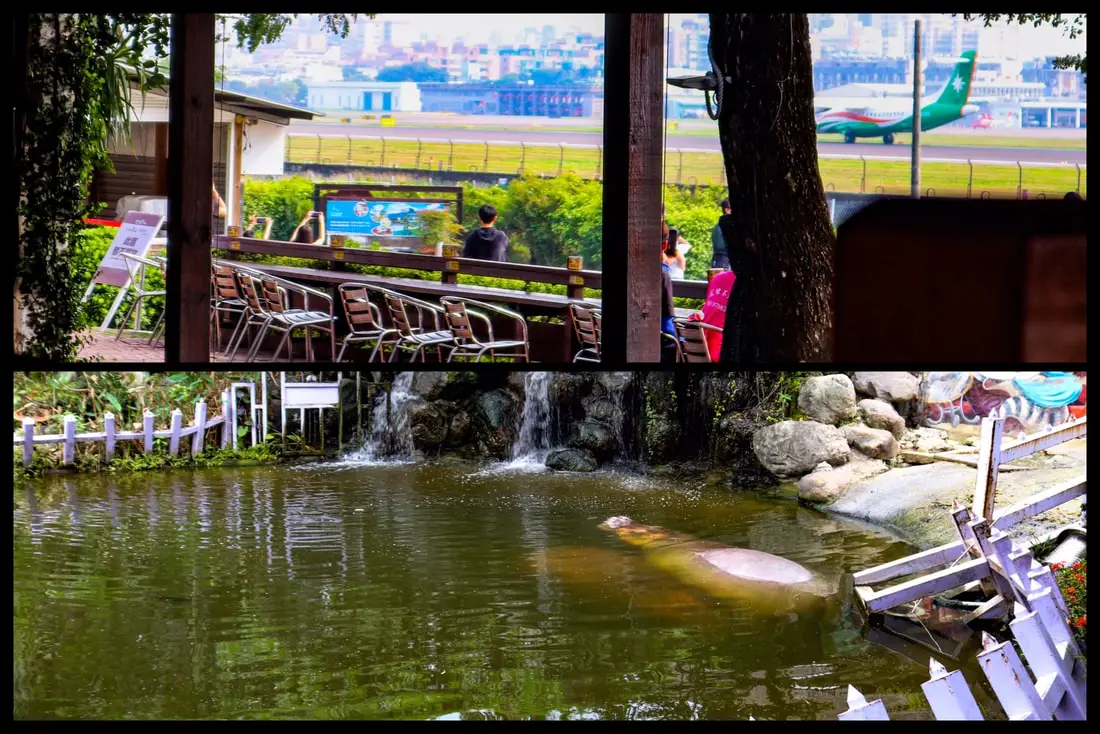
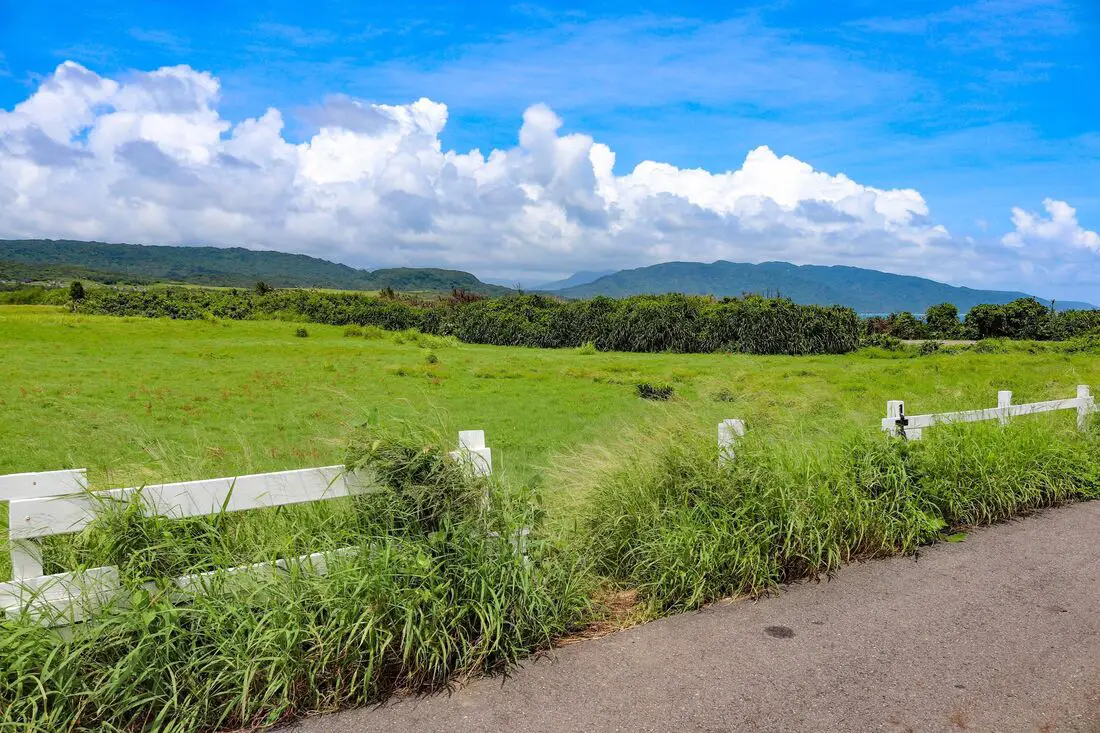
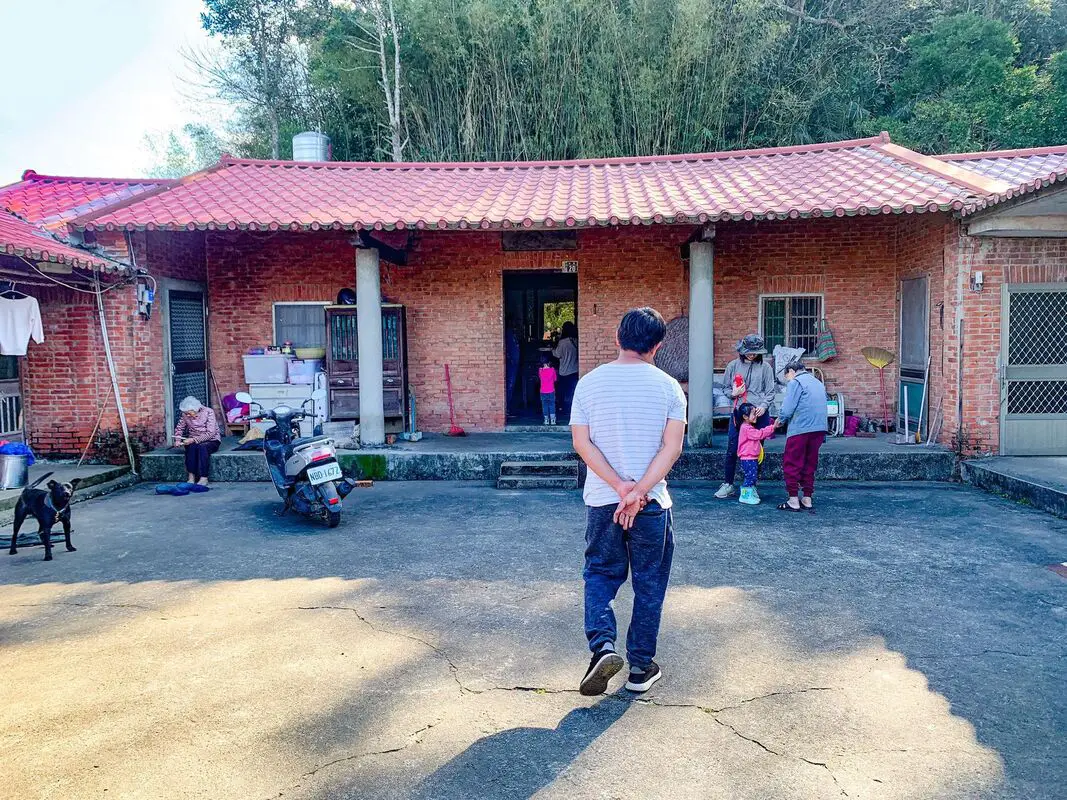
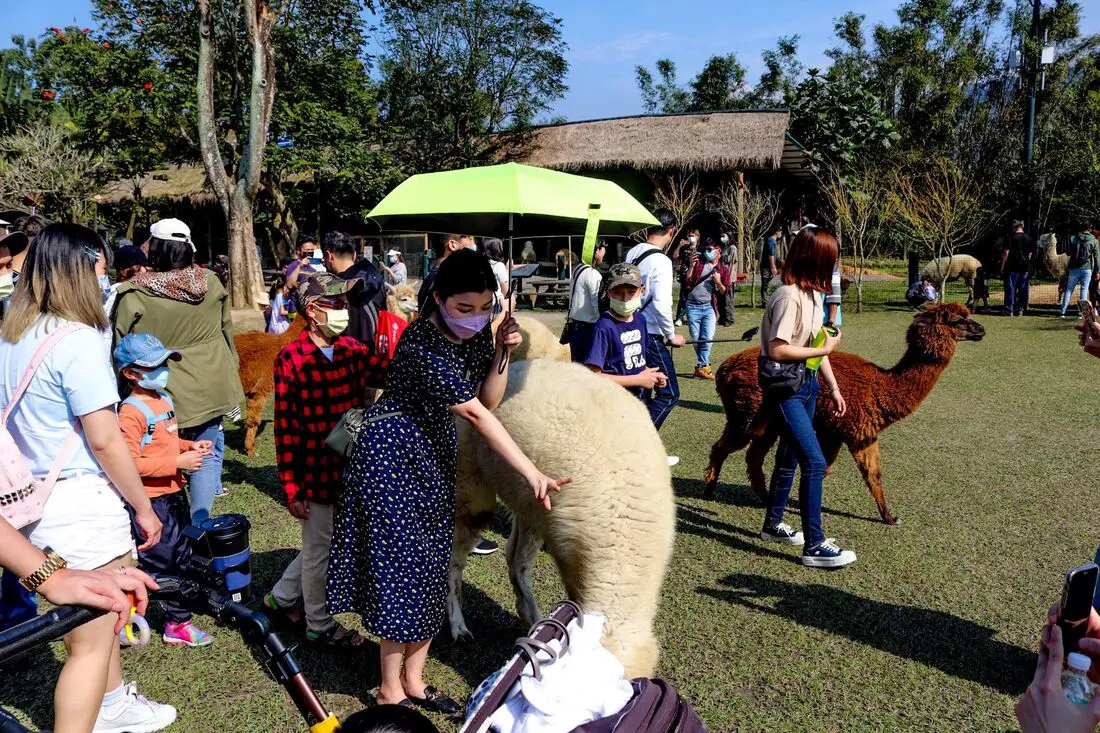

 RSS Feed
RSS Feed
